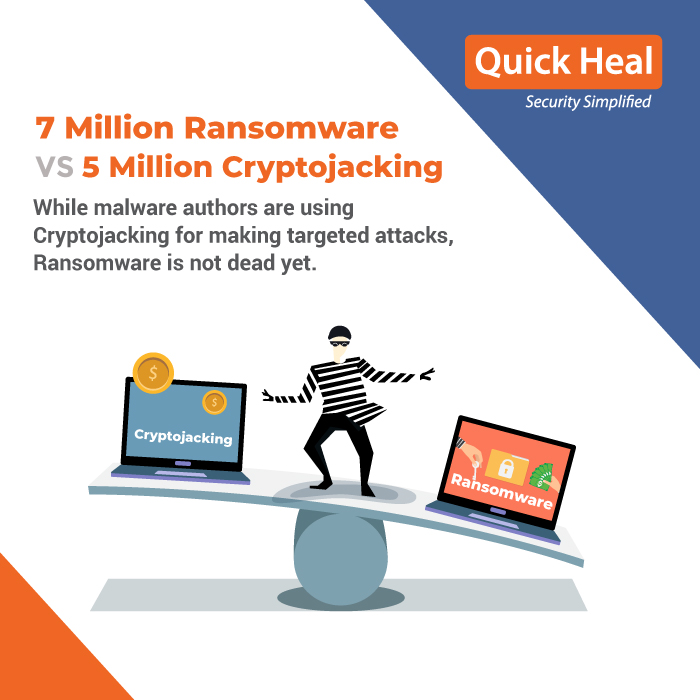Quick Heal Threat Report – Cryptojacking rising but Ransomware still #1 threat for consumers

In wake of the growing incidences of targeted cyber-attacks on enterprises using Cryptojacking, due to its ease of deployment and instant return on investments; it rather comes as a surprise that malware authors are still counting on Ransomware for targeting consumers and home users.
Yes, you heard it right!
According to the Annual Threat Report of Quick Heal Technologies, 2018 witnessed 7 Million Ransomware detections in consumer sector as compared to just 5 million Cryptojacking.
One prominent and destructive Ransomware to grab everyone’s attention in 2018 was “GandCrab”. Observed for the first time in January 2018, GandCrab within a month claimed to have infected over 48,000 nodes. This massive infection undoubtedly turned Europol’s head and made them coordinate with a security firm to hack GandCrab servers for decryption keys.
Ever since, GandCrab has kept evolving itself and in fact launched multiple variants by the end of year 2018, posing a serious threat in the consumer landscape.
In fact, in its latest findings, Quick Heal Labs reported that websites that until now where delivering Emotet (most prominent banking Trojan of 2018) have now started delivering GandCrab Ransomware V 5.1.
Yet another destructive Ransomware to have raised its head and weakened the security software was “Dharma” Ransomware. With more than 150 extensions observed in this campaign, Dharma Ransomware tried to spread over the network after successful encryption.
Few of the other Ransomware to have made noise in 2018 include the sophisticated “Katyusha” Ransomware and “Ryuk” Ransomware that seems to be a spear phishing attack.
With over 19K Ransomware detected every single day, it wouldn’t be wrong to assume that moving forward, MaaS will soon make way for RaaS (Ransomware as a Service) or the future possibility of As-a-Service model for APTs (Advanced Persistent Threat) allowing cyber criminals to gain easy unauthorized access to networks.
2 Comments
greetings, article is good but very brief. more should be given for rdp
Hi,
Thanks for writing in. If you wish to get detailed information regarding RDP, you can refer our blog post https://bit.ly/2TgiShQ.
Regards,
Team Quick Heal